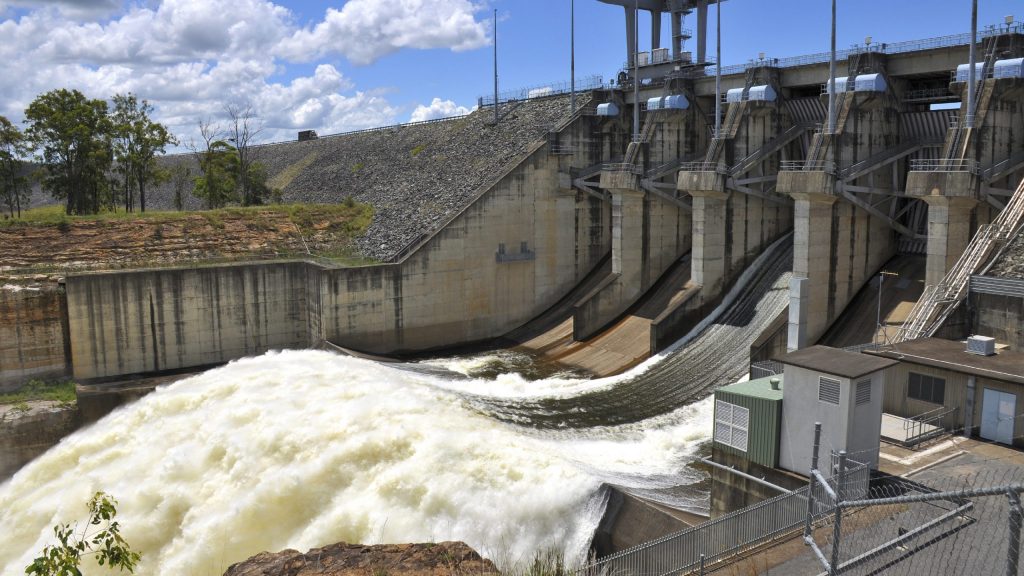
Ice cores provide new perspective on East Australian drought risk
From Antarctic ice, a new understanding of drought & flood risk in Australia
As surprising as it may seem, there is a close link between the rainfall in Australia and the levels of sea salt found in annual layers of Antarctic ice.
Understanding this link is helping AAPP researchers and Australian water managers to build a clearer picture of Australia’s erratic climate in the era before modern rainfall records.
The multi-agency team, led by Dr Anthony Kiem from the Centre for Water, Climate and Land at the University of Newcastle and funded by SEQ Water and Queensland’s Department of Environment and Science, analysed climate signals in ice cores from Law Dome dating back about 1000 years.
Their findings are reshaping many of the long-held assumptions that govern water resource management and infrastructure planning in Australia.
A study published in Journal of Hydrology: Regional Studies in June 2020 uses Antarctic ice core records to reconstruct rainfall for catchments that supply water to South East Queensland.
A follow-up study due for publication in October 2020, has used this data to challenge some of the long-held assumptions that govern how water resource managers plan for the future in Australia.
Dr Tessa Vance from the AAPP said it was clear that modern rain gauge records for much of Eastern Australia, do not reflect the full potential for climate extremes.
“Our results suggest that modern rain gauge records are not a reliable indicator for the kind of climate extremes that are possible for this region,” Dr Vance.
“All of the abnormally wet and dry periods experienced in South East Queensland during the past hundred years are relatively mild when compared to what the ice core record reveals.”
“The severity of the drought between 2000 and 2007 has almost certainly been exceeded many times during the past one thousand years.”
“The longest unusually wet spell according to our ice record lasted 39 years, which is almost five times longer than wettest period since 1900.”
The instrumental record contains three major droughts, including the Federation drought (from roughly 1895 to 1902), the World War Two drought (from roughly 1937 to 1945), and the Millennium drought (from roughly 1997 to 2010).
The ice core record shows that the lengths of these three major droughts were matched or exceeded several times prior to 1900, including a particularly dry spell between the years 1100 and 1250.
Some centuries were drier than others, but there were also long wet periods, from 1400 to 1650 and 1750 to 1900.
Dr Vance said that the findings had important implications for water resource and infrastructure planning.
“Modern rainfall records likely convey a false sense of security that is not supported by the ice core record,” said Dr Vance.
“Water infrastructure in Australia is still mostly designed based on statistics calculated from the recent instrumental rainfall and streamflow observations.”
“Water is precious, and our hope is that these findings can help water managers all around Australia to better characterise and manage flood and drought risk,” said Dr Vance.
The link between Australian rainfall patterns and sea salt levels in Antarctic coastal ice cores is now well established thanks to the work of Dr Vance and her colleagues.
The mechanisms behind this link are climate processes that simultaneously control aspects of the rainfall in Australia and the snowfall in Antarctica.
These include the El Niño-Southern Oscillation (ENSO), the Interdecadal Pacific Oscillation (IPO), and the Southern Annular Mode (SAM).
These climate processes are responsible for changes in the wind patterns that cause sea salt to be whipped up from the surface of the Southern Ocean and deposited in East Antarctica.
Dr Vance said the research shows the growing value of Australia’s investment in Antarctic climate research for understanding long-term changes in Australia’s climate.
“Antarctic ice cores can tell us a surprising amount about the climate in Australia before the start of modern measurements,” Dr Vance said.
“Antarctica and Australia are connected by vast climate systems, which means we can gain all sorts of insights into Australia’s past climate by studying past changes in Antarctica.”
Media Contact:
David Reilly
Phone: 0428 510 641
Email: David.Reilly@mediaswitch.com.au



